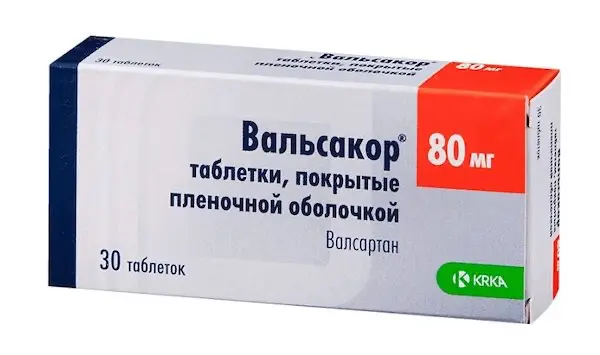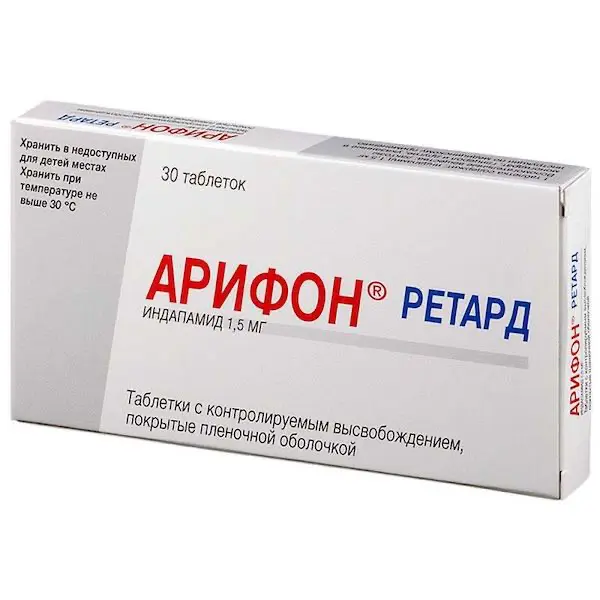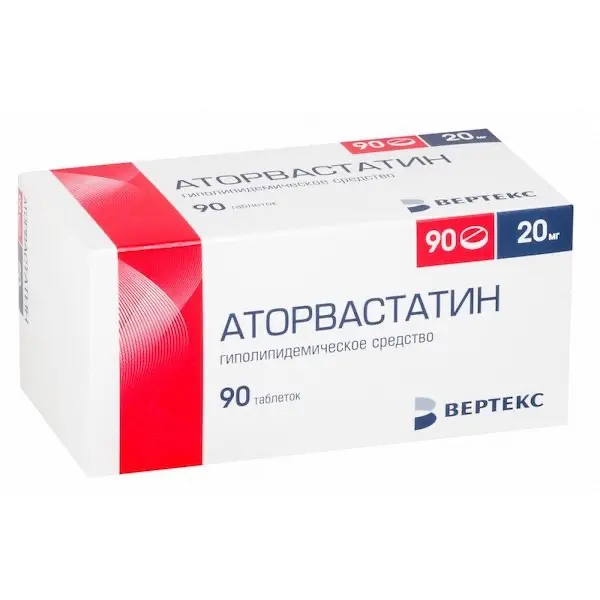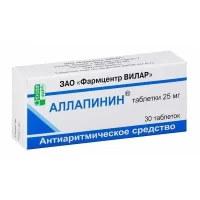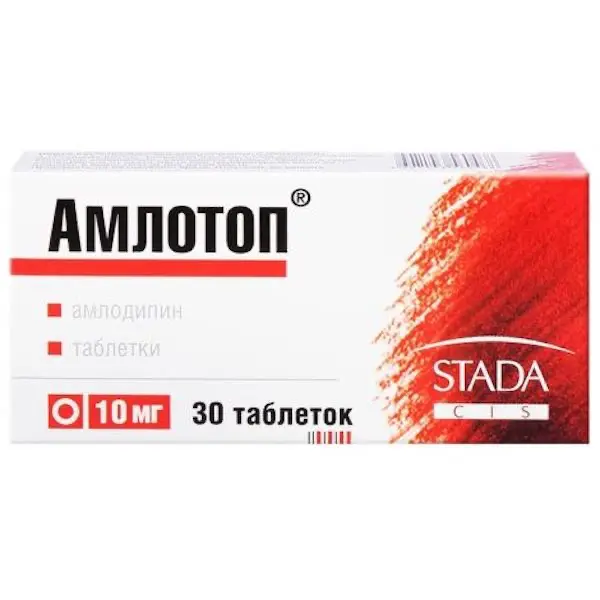Description
Valsacor Pharmacodynamics
Valsartan is a selective oral angiotensin II receptor antagonist (type AT1) of a nonprotein nature.
It has a selective antagonistic effect on AT1 subtype receptors. The consequence of AT1 receptor blockade is increased plasma concentration of angiotensin II, which can stimulate unblocked AT2 subtype receptors, which presumably regulates the effects of AT1 receptors. Valsartan has no agonist activity against AT1 receptors. Its affinity for AT1 receptors is approximately 20,000 times higher than that for AT2 receptors.
Valsartan does not inhibit ACE, also known as kininase II, which converts angiotensin I to angiotensin II and degrades bradykinin. Due to the lack of effect on ACE, the effects of bradykinin and Substance P are not potentiated, so dry cough is unlikely to develop when taking angiotensin II antagonists. Valsartan does not interact with or block other hormone receptors or ion channels involved in the regulation of cardiovascular function.
Arterial hypertension
In the treatment of arterial hypertension, valsartan reduces BP without affecting HR.
After oral administration of a single dose of the drug, the antihypertensive effect develops within 2 hours, and the maximum BP reduction is achieved within 4-6 hours. The antihypertensive effect of the drug is maintained for 24 hours after its administration. With repeated prescriptions of valsartan, maximum BP reduction, regardless of dose, is achieved in 2-4 weeks and is maintained during long-term therapy. Combination with hydrochlorothiazide provides significant additional BP reduction.
Sudden discontinuation of valsartan is not associated with a sharp rise in BP or other adverse events.
In patients with arterial hypertension, type 2 diabetes and nephropathy taking valsartan at a dose of 160-320 mg, a clinically significant reduction in proteinuria (albumin excretion) (36-44%) has been observed.
Use after acute myocardial infarction
Administration of valsartan in patients 12 hours to 10 days after development of myocardial infarction complicated by chronic heart failure and/or left ventricular systolic dysfunction within 2 years reduces rates of overall mortality, cardiovascular mortality and prolongs time to first hospitalization for exacerbation of chronic heart failure (CHF), recurrent myocardial infarction, sudden cardiac arrest and nonfatal stroke (without fatal outcome).
The safety profile of valsartan in patients with acute myocardial infarction is similar to that of other conditions.
Chronic Heart Failure
During 2 years therapy with standard therapy (ACE inhibitors and/or diuretics and/or digoxin and/or beta-adrenoblockers) with left ventricular ejection fraction (LVEF) less than 40% and LV internal diastolic dimension (LV I/DD) greater than 2.9 cm/m2 was significantly reduced in patients with CHF class II-IV according to NYHA classification with a risk of primary hospitalization for exacerbation of CHF.
In patients not receiving ACE inhibitors, treatment with valsartan significantly reduces overall mortality, cardiovascular mortality, and CVD-related morbidity. When ACE inhibitors are used without a beta-adrenoblocker, cardiovascular mortality and CVD-related morbidity are reduced. Treatment with valsartan leads to a significant reduction of NYHA class F and reduces the severity of heart failure symptoms (including dyspnea, increased fatigue, edema and moist rales in the lungs), significantly improves quality of life (Minnesota Quality of Life Questionnaire for patients with CHF), increases RVL and significantly reduces LV CPR.
Indications
– Arterial hypertension;
– chronic heart failure (NYHA functional class II-IV) in patients receiving standard therapy with one or more drugs from the following groups: diuretics, cardiac glycosides, and ACE inhibitors or beta-adrenoblockers (the use of each of the listed drugs is not mandatory);
– increase the survival rate of patients with acute myocardial infarction (12 h-10 days), complicated by left ventricular insufficiency and/or left ventricular systolic dysfunction, with stable hemodynamic parameters.
Contraindications
– Hypersensitivity to valsartan or other drug components;
– Liver dysfunction, biliary cirrhosis and cholestasis;
– Mild to moderate hepatic impairment (for 320 mg dose);
– concomitant use with aliskiren in patients with diabetes mellitus or impaired renal function (CKR <60 ml/min);
– lactase deficiency, lactose intolerance, glucose-galactose malabsorption syndrome;
– pregnancy;
– Lactation (breastfeeding);
– children and adolescents under 18 years of age (efficacy and safety of valsartan in children has not been proven);
Caution: Severe renal dysfunction (CKR <10 mL/min); aortic and/or mitral valve stenosis; hypertrophic obstructive cardiomyopathy (HOCMP); chronic heart failure (NYHA functional class III-IV); condition after kidney transplantation; hemodialysis; hyponatremia; diet with restriction of table salt intake; bilateral stenosis of the renal arteries or stenosis of the artery of the only kidney; hyperkalemia; primary hyperaldosteronism; conditions accompanied with the reduction of the circulatory blood pressure (including diarrhea, vomiting, etc.). including diarrhea, vomiting; hereditary angioedema, or edema against the background of previous therapy with angiotensin II receptor antagonists or ACE inhibitors.
Use during pregnancy and lactation
Given the mechanism of action of angiotensin II receptor antagonists, the risk to the fetus cannot be excluded. The drug is contraindicated in II and III trimesters of pregnancy, because its administration during this period may cause fetotoxic effects (decreased renal function, scarcity of water, delayed ossification of fetal skull bone) and neonatal toxic effects (renal failure, arterial hypotension, hyperkalemia). In case of using the drug in II and III trimesters of pregnancy, a renal and fetal cranial bone ultrasound examination should be performed.
Valsacor®, like any other drug with a direct effect on the RAAS, should not be used during pregnancy as well as in women planning pregnancy. If pregnancy is planned, it is recommended that the patient be transferred to an alternative hypotensive therapy taking into account the safety profile.
When using drugs that affect the RAAS, women of childbearing age should be informed about the potential risk of adverse effects of these drugs on the fetus during pregnancy. If pregnancy is confirmed, Valsacor® should be withdrawn as soon as possible.
It is not known whether Valsartan is excreted in breast milk. Breast-feeding should be discontinued if Valsacor® has to be used during lactation.
Valsartan has not been shown to adversely affect reproduction in male and female rats at oral doses up to 200 mg/kg/day. This dose is six times the maximum recommended daily dose in humans in terms of mg/m2 (calculated on the basis of 320 mg/day for oral administration and a patient body weight of 60 kg).
Administration in liver dysfunction
It is contraindicated in patients with liver dysfunction, biliary cirrhosis and cholestasis (mild to moderate degree of severity – for 320 mg dose).
Administration in renal dysfunction
This medicine should be used with caution in patients with severe renal dysfunction (CKD <10 ml/min), conditions after kidney transplantation, patients on hemodialysis, bilateral renal artery stenosis or stenosis of the artery of the only kidney.
Concomitant use with aliskiren is contraindicated in patients with impaired renal function (CKD <60 ml/min).
Administration in children
Contraindicated: age less than 18 years (efficacy and safety of valsartan in children has not been proven).
Administration in elderly patients
No dose adjustment is required for elderly patients (over 65 years of age).
Dosage and administration.
- The drug is prescribed orally, regardless of meals, number of times a day – 1-2 times.
- Arterial hypertension.
- Recommended initial dose is 80 mg 1 time per day regardless of race, age and sex.
- Hypotensive effect develops within 2 weeks and reaches its maximum after 4 weeks. In patients who do not achieve optimal BP control the daily dose of Valsacor® may be gradually increased up to maximum daily dose of 320 mg. Concomitant use of diuretics such as hydrochlorothiazide can achieve significant additional BP reduction.
- Chronic heart failure (NYHA functional class II-IV)
- The recommended initial dose is 40 mg twice daily. Gradual (over at least two weeks) dose increase to 80 mg 2 times per day is possible, if tolerated well – to 160 mg 2 times per day. Maximum daily dose is 320 mg divided into two doses.
- It is recommended to reduce the dose if concomitant use of diuretics. It is possible to use simultaneously with other drugs intended for the treatment of CHF. However, the combination of ACE inhibitor, beta-adrenoblocker and valsartan is not recommended. In patients with heart failure, renal function should always be evaluated.
- Increased survival in patients with acute myocardial infarction
- In patients with stable hemodynamics, treatment should be initiated as early as 12 h after the development of myocardial infarction. After an initial dose of 20 mg 2 times daily, the dose of Valsacor® should be increased by titration to 40 mg, 80 mg 2 times daily for several weeks until the target dose of 160 mg 2 times daily is reached. The maximum daily dose is 320 mg 2 times/day.
- In general, taking into account tolerance of therapy it is recommended to increase the dose to 80 mg 2 times per day by the end of the 2nd week of treatment and to the maximum target dose of 160 mg 2 times per day – by the end of the 3rd month of therapy. In case of symptomatic arterial hypotension or renal dysfunction, it is reasonable to consider reducing the dose.
- Valsacor® may be used in patients after myocardial infarction during therapy with other drugs including thrombolytics, acetylsalicylic acid as an antiplatelet agent, beta-adrenoblockers, HMG-CoA reductase inhibitors (statins) and diuretics. It is not recommended to use Valsacor® simultaneously with ACE inhibitors.
- In patients with myocardial infarction renal function should always be evaluated.
- No dose adjustment is required in elderly patients (over 65 years old).
- No dose adjustment is required in patients with impaired renal function.
- In patients with liver dysfunction of mild to moderate degree of non-biliary genesis without cholestasis, the maximum daily dose should not exceed 80 mg.

